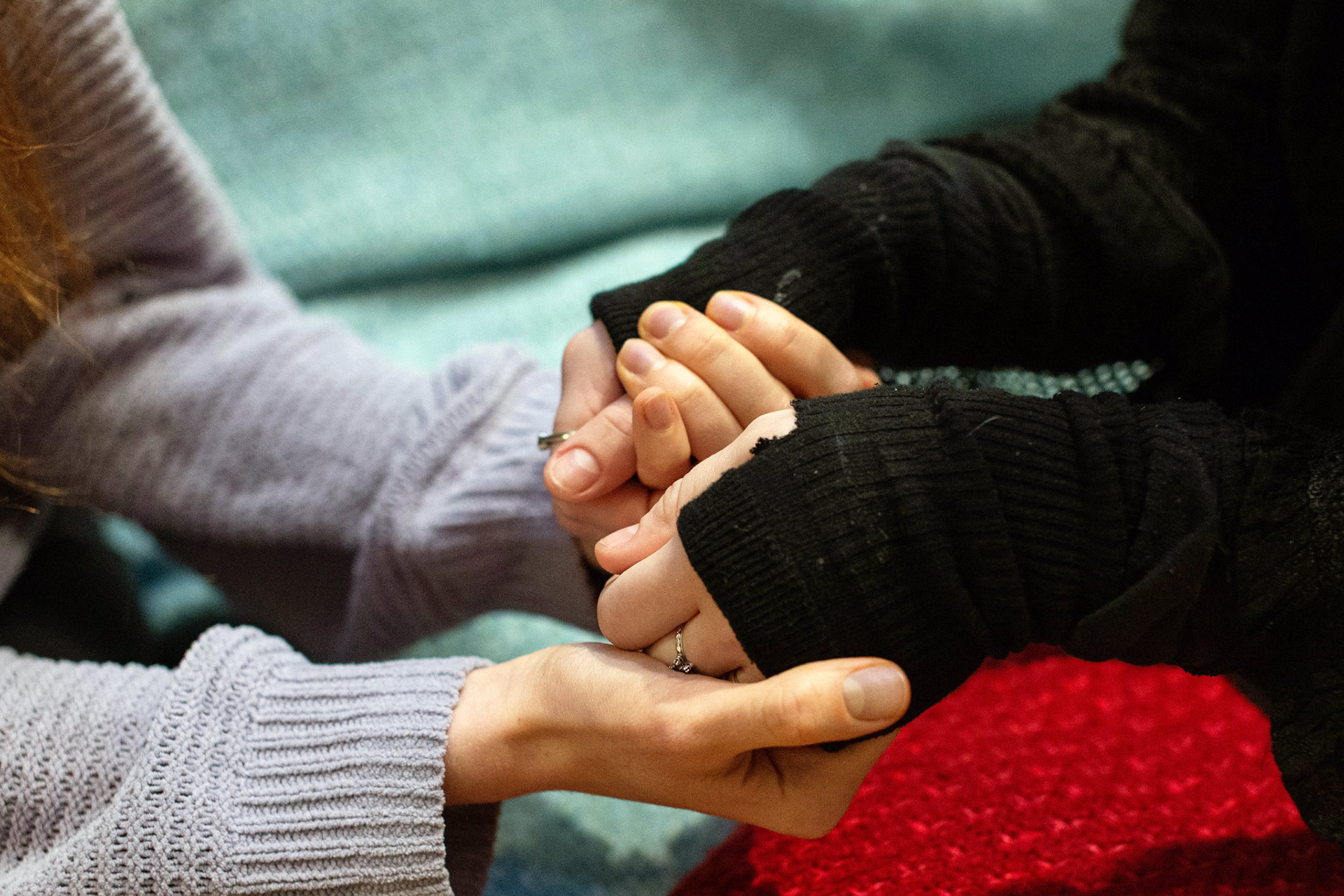
Welcome to the Solent Mind Self Harm Support Hub
A dedicated space for anyone who is supporting young people who self-harm in Hampshire, Portsmouth, Southampton and the Isle of Wight.
Important Information
Due to funding, the Peer Support element of our Self-Harm Support Service will be coming to an end at the end of March.
If you would like to book in a 1:1 session or attend one of our free online awareness sessions before the end of the year, please visit the support for parents, carers and guardians section of this website.
How Solent Mind can help:

About Self Harm
Self-injury and self-harm are both coping mechanisms used by an individual to deal with difficult feelings, emotional pain and situations that can feel overwhelming.
What is self-injury?
Self-injury is where an individual purposely hurts themselves in a physical way.
Cutting is most widely known, however self-injury can take many forms including, but not limited to, burning the skin, scratching, pulling hair, and inserting objects into the body.


What is self-harm?
Self-harm behaviours can be less obvious than self-injury, however these can impact a person both in the present and later in life.
Self-harm can include acts such as excessive exercise, over or under eating, drinking and drug abuse.
Although there are two terms, injury, and harm, we will use self-harm as the term throughout our information.
Why might someone self-harm?
There are lots of reasons why someone might self-harm, but for many it is linked with dealing with something they have experienced in the past or are going through right now.
Some people have described their self-harm as a way to give some relief from the anxiety and distress they are feeling. It can be something that provides a distraction from the emotional pain, or to feel a sense of control over their body or current situation and can be used by some to express internal feelings in an external way.
Difficult experiences can cause someone to start self-harming, these can include coping with mental health issues such as depression or anxiety, because of physical or sexual abuse, bullying, relationships ending, illness, money worries and general pressures in life at school, college or in the workplace.
Self-Harm Myths
There are lots of myths and misconceptions surrounding self-harm and the people who experience it.
Cutting is the only form of self-harm to worry about: Cutting is one form of self-harm. Others could be head-banging, burning, using drugs or alcohol to cope with problems, not eating or over-eating, spending all their time on addictive behaviours like gaming or social media, and swallowing foreign objects. Self-harm covers any behaviour or compulsion that results in physical and or mental harm.
If young people know about self-harm, they might be tempted to try it: If young people know about self-harm it doesn’t make them more likely to try it. If you notice something that makes you worry a young person might have hurt themselves on purpose, try to find a calm moment to talk about it with them.
Self-harm is only present in teenage girls: It is often assumed that girls are more likely to self-harm than boys, however this is not true. Self-harm is a coping mechanism, something that some young people rely on when under stress or in difficult situations – it isn’t sex or gender based.
Children and young people grow out of self-injuring behaviours, so what is the point in treatment?: Some children and young people grow out of self-injuring behaviours but lots don’t. Self-harming could be a way to deal with difficult feeling so treatment can help find healthier coping mechanisms when life feels stressful.
It is just attention seeking: Due to the guilt felt from self-harming, many people who hurt themselves will actually spend weeks, months or sometimes years hiding their harm from other people.
Self-harm is a suicide attempt: Self-harm is a coping mechanism and for the majority of people it is used as a way to get through the current distress they feel. It is used as a way to cope with the day to day rather than an attempt to end their life.
People who self-harm are violent: Just because someone is hurting themselves, this does not make them more likely than anyone else to hurt another person.
Risk Factors
Anyone can self-harm, and each person’s reason for starting is very personal to them.
However, there are some groups that are at a higher risk, these include young people, survivors of abuse or neglect, are LGBTQ+, have a mental illness, have a substance abuse issue, are or have been in prison and asylum seekers and veterans.

How Solent Mind can help:
